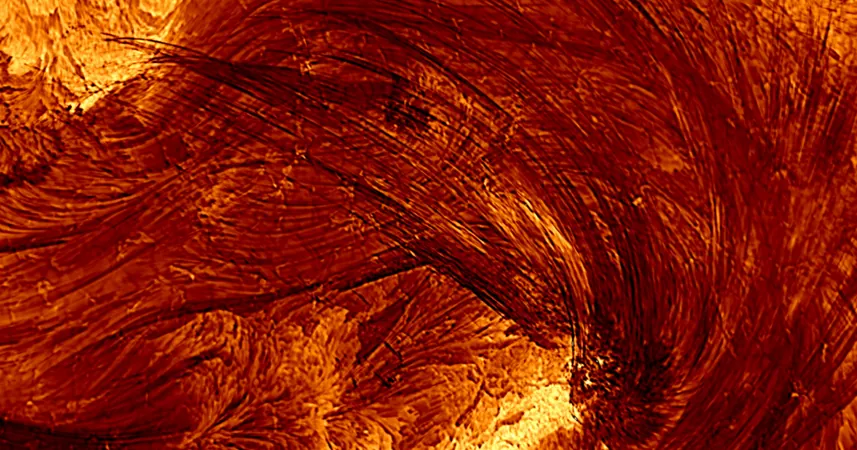
Unprecedented Clarity: World's Largest Solar Telescope Reveals Stunning Solar Flare
2025-09-03
Author: Noah
A Revolutionary Breakthrough in Solar Observation
In an astounding leap for astronomy, the world's largest solar telescope has captured the clearest images of a solar flare ever recorded. The Daniel K. Inouye Solar Telescope, nestled in Hawaii, has unveiled a luminous flare measuring four times the diameter of our planet at an unparalleled level of detail.
Incredible Details of Coronal Loops
These groundbreaking images show coronal loops that are incredibly fine strands, with an average width of about 48.2 kilometers (30 miles) and some as narrow as 21 kilometers (13 miles)—the smallest coronal loops ever observed. This remarkable resolution provides insights that could transform our understanding of the Sun's magnetic architecture.
Game-Changing Implications for Space Weather
According to the U.S. National Science Foundation (NSF), which manages the telescope, this discovery marks a significant breakthrough in deciphering the essential structure of solar coronal loops. It pushes the boundaries of flare modeling into uncharted territory, offering potential advancements in space weather forecasting.
Witnessing an Energetic X-Class Flare
Captured during the decay phase of an X1.3-class flare on August 8, 2024, the dark coronal loop strands were examined in an unprecedentedly clear manner. Coronal loops are arcs of plasma that trace the Sun's magnetic field lines, often appearing before solar flares that release immense bursts of energy. Such solar storms can have significant repercussions for Earth's vital infrastructure.
A Historic Moment in Solar Research
Lead author Cole Tamburri, a Ph.D. candidate at the University of Colorado Boulder and participant in the Inouye Solar Telescope Ambassador Program, commented, "This is the first time the Inouye Solar Telescope has observed an X-class flare. These are among the most energetic phenomena our star produces, and we were fortunate to capture this one under optimal viewing conditions."
Revealing the Building Blocks of Solar Flares
The discoveries suggest that these coronal loops could be the fundamental building blocks of flare architecture. "If that’s true, we’re not merely observing bundles of loops; we’re getting our first look at individual loops," Tamburri elaborated. "It’s like transitioning from seeing a vast forest to recognizing each individual tree."









 Brasil (PT)
Brasil (PT)
 Canada (EN)
Canada (EN)
 Chile (ES)
Chile (ES)
 Česko (CS)
Česko (CS)
 대한민국 (KO)
대한민국 (KO)
 España (ES)
España (ES)
 France (FR)
France (FR)
 Hong Kong (EN)
Hong Kong (EN)
 Italia (IT)
Italia (IT)
 日本 (JA)
日本 (JA)
 Magyarország (HU)
Magyarország (HU)
 Norge (NO)
Norge (NO)
 Polska (PL)
Polska (PL)
 Schweiz (DE)
Schweiz (DE)
 Singapore (EN)
Singapore (EN)
 Sverige (SV)
Sverige (SV)
 Suomi (FI)
Suomi (FI)
 Türkiye (TR)
Türkiye (TR)
 الإمارات العربية المتحدة (AR)
الإمارات العربية المتحدة (AR)